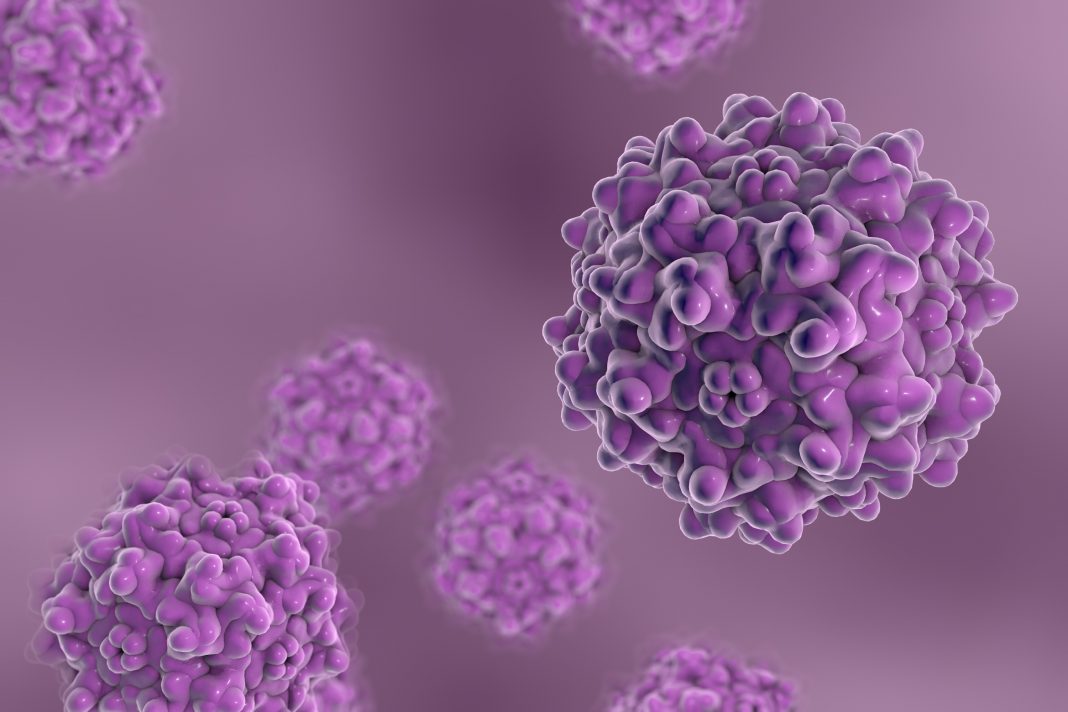Just because a gene therapy vehicle is good at delivering cargo doesn’t mean that the vehicle’s deliveries can be reliably confirmed. Sometimes, after deliveries are completed, the cellular equivalent of a confirmation slip, the fluorescent glow of a protein expressed by a reporter gene, is too faint. That is, the glow is simply too weak or fades too quickly. Either way, detecting the glow is important. Even low-level or transient expression of gene therapy cargo, such as genome editing machinery, can have profound consequences.
To help establish the safety and efficacy of gene therapies, scientists based at the Children’s Hospital of Philadelphia (CHOP) have developed a sensitive screening method for adeno-associated virus (AAV) vectors. Unlike conventional screening methods, which excel at detecting high, stable expression of a reporter gene, the new screening method is designed to capture both high and low transgene expression.
The CHOP scientists, led by Beverly L. Davidson, PhD, report that their screen relies on editing-dependent reporter mice. Details appeared July 30 in the journal Nature Communications, in an article titled, “Standard screening methods underreport AAV-mediated transduction and gene editing.”
“We hypothesized that injection of [an AAV] vector into a loxP-STOP-loxP-tdTomato (Ai14) transgenic reporter mouse would capture both stable, high transgene expression as well as transient or low transgene expression,” the article’s authors wrote. “In Ai14 mice, robust, stable transgene expression generates nuclear-localized eGFP and Cre mediates recombination and activation of the endogenous tdTomato reporter. Transient or low levels of Cre:eGFP, which may be insufficient for detectable nuclear-localized eGFP, can still activate endogenous tdTomato.”
When the scientists tested this approach, they found that it sensitively captures both high and low transgene expression from AAV vectors.
“Using AAV8 and other serotypes, we demonstrate the superiority of the approach in a side-by-side comparison with traditional methods, demonstrate numerous, previously unknown sites of AAV targeting, and better predict the gene editing footprint after AAV-CRISPR delivery,” the article’s authors continued. “We anticipate that this system, which captures the full spectrum of transduction patterns from AAV vectors in vivo, will be foundational to current and emerging AAV technologies.”
AAV vectors are bioengineered tools that use a harmless virus to transport modified genetic material safely into tissues and cells impacted by otherwise difficult-to-treat conditions. These vectors deliver their genetic cargo into tissues, after which the modified genes will create new instructions for those tissues and help treat disease. (Vector technology that was pioneered at CHOP led to the development of the first FDA-approved gene therapies, including Kymriah for B-cell acute lymphoblastic leukemia and Luxturna for inherited retinal disease.)
For safe and effective application of these vectors, researchers must have a complete picture of where the virus delivers its genetic cargo in the body.
“Conventional screening methods miss transient or very low levels of expression from AAV viral vectors,” said Davidson, who is chief scientific strategy officer at CHOP and director of the Raymond G. Perelman Center for Cellular and Molecular Therapeutics. “What this study shows is that AAV vectors lead to gene transfer in many more places than we and other groups initially realized.”
Gaining a complete picture of the reach of this genetic cargo is particularly relevant following the discovery of the CRISPR/Cas9 system, which has revolutionized genome editing—removing, adding, or altering sections of DNA—and opens the door to a new degree of precision medicine. CRISPR/Cas9 gene editing machinery, when expressed in cells even for a short time or at low levels, permits targeted DNA editing.
Many groups are seeking to use AAV vectors to deliver CRISPR/Cas9 due to its track record as a safe vehicle for gene transfer. Due to methodological limitations, many sites of low-level gene transfer have been missed. Combining AAV with gene editing machinery requires a more sensitive method for safe and effective applications.
The new screening method, its developers assert, will help improve the safety of AAV-gene editing approaches because it better defines sites where the vector expresses the modified gene. The developers report that when their method is used, transgenic mice are marked even with a short burst of expression or very low expression. In side-by-side comparisons with conventional screening methods, the method radically redefines the true extent of AAV-mediated gene transfer.
Importantly, because high and stable expression levels are not required for effective editing, dose levels that would not be ideal for more stable expression might work very well for genome editing. Additionally, this method expands the utility of the AAV platform by revealing new, never-before-described sites of gene transfer. It also offers an opportunity to better understand the basic biology of AAV vectors and what is required for them to effectively deliver their genetic payload.






